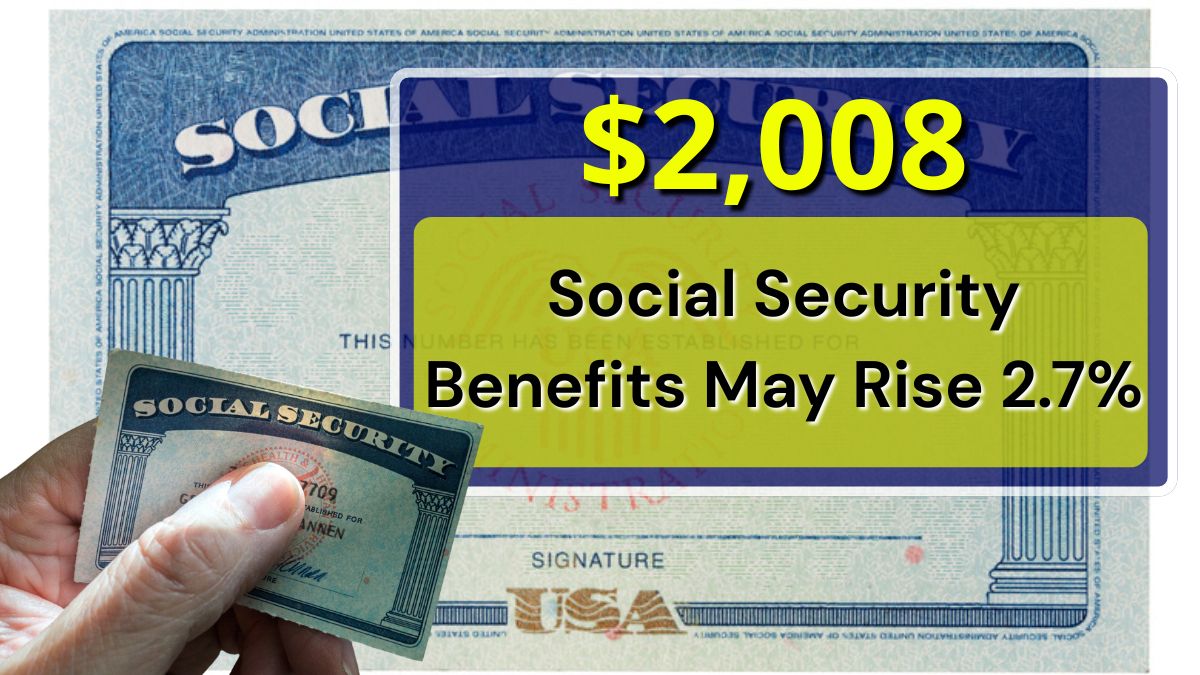If you’re counting on Social Security to keep up with rising prices, there’s some news you’ll want to pay attention to. Current projections show that Social Security benefits could increase by around 2.7% in 2026 — a slightly larger cost-of-living adjustment (COLA) than this year’s.
Sounds great, right? A bigger check every month is always welcome. But before you start celebrating, here’s the catch: rising Medicare costs could quietly eat away at your raise.
That’s right — even though you may technically get a 2.7% boost, you might not actually feel it in your wallet.
How the Social Security COLA Works
Each year, the Social Security Administration (SSA) reviews inflation data to decide how much to raise benefits. This annual adjustment — known as the cost-of-living adjustment (COLA) — is meant to help retirees keep up with rising prices for food, rent, and other essentials.
Without COLAs, retirees would lose purchasing power year after year. That’s why these updates matter so much for millions of seniors who rely on Social Security as a major source of income.
For 2026, the projected COLA is around 2.7%, though that number could shift slightly when the official announcement arrives on October 15. The final calculation will include inflation data through September.
If inflation turned out higher than expected, the raise could be a bit larger — but so could your healthcare costs
The Medicare Problem: Where Your Raise Might Go
Here’s something many retirees forget — if you receive both Social Security and Medicare, your Medicare Part B premium is automatically deducted from your monthly benefit.
In 2025, the standard Part B premium rose from $174.70 to $185. But according to projections from the Medicare Trustees, the 2026 premium could jump to $206.50 — that’s a $21.50 increase.
Now, let’s put that into perspective:
- The average Social Security benefit is about $2,008 per month.
- A 2.7% COLA would add around $54 per month.
- But if Part B rises by $21.50, your net increase could drop to roughly $32.50.
So, even though your benefit technically goes up, your take-home pay barely changes.
Why Relying on COLAs Alone Isn’t Enough
If you’ve been depending on Social Security COLAs to offset inflation, it’s time to think differently. These adjustments are meant to help, not solve the problem.
Healthcare costs, housing, and groceries often rise faster than the COLA can keep up. That’s why experts suggest building additional income sources in retirement — so you’re not at the mercy of policy changes or inflation swings.
How to Strengthen Your Retirement Income
Here are a few ways to make your finances more resilient:
1. Build a balanced portfolio.
Even in retirement, a healthy mix of stocks and bonds can provide both growth and stability. Stocks can generate dividend income, while bonds offer predictable payouts.
2. Explore part-time or gig work.
Not every retiree wants a 9-to-5. The gig economy — driving, tutoring, freelancing, or consulting — lets you earn on your terms while staying active and social.
3. Consider tax-efficient withdrawals.
Managing which accounts you withdraw from first can help you keep more of your income and reduce unnecessary taxes.
4. Stay informed.
The Social Security Administration and Medicare both release updates every year. Keeping track helps you plan around benefit changes instead of being surprised by them.
The key is to treat Social Security as a foundation — not the whole house. Your benefits will help, but your savings and investments are what will give you financial freedom.
What to Expect Next
The official COLA announcement arrives on October 15, alongside updates on the earnings-test limit and maximum benefit amount for 2026.
If the 2.7% estimate holds, retirees can expect a modest increase — but as we’ve seen, higher healthcare premiums might take a chunk out of it.
Still, any raise is better than none. And by planning ahead — saving, investing, and creating backup income streams — you can make sure those yearly adjustments actually make a difference in your retirement lifestyle.
Frequently Asked Questions
1. What is the projected Social Security COLA for 2026?
Experts currently expect a 2.7% COLA increase for 2026, though the official figure will be confirmed by the Social Security Administration on October 15.
2. Why might I not see the full COLA increase in my check?
If you’re enrolled in Medicare, rising Part B premiums will be deducted from your monthly Social Security benefit, reducing your net increase.
3. How can I prepare for rising costs in retirement?
Don’t rely only on Social Security. Build savings, invest wisely, and consider part-time work or dividend income to cushion against inflation.
